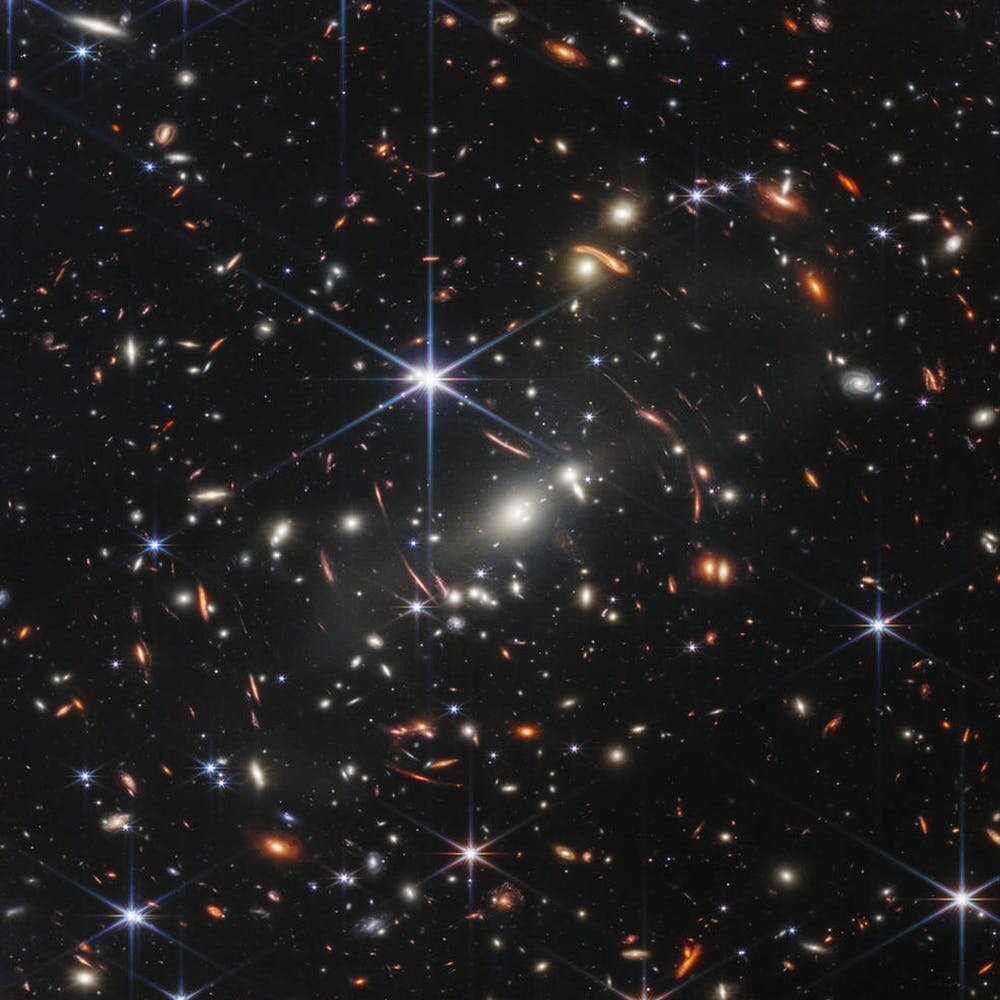How the James Webb Space Telescope lets us see the first galaxies in the universe
Versão portuguesa disponível aqui
It has been an exciting week with the release of breathtaking photos of our universe by the James Webb Space Telescope (JWST). Images such as the one below give us a chance to see faint distant galaxies as they were more than 13 billion years ago.

It’s the perfect time to step back and appreciate our first-class ticket to the depths of the universe and how these images allow us to look back in time. These images also raise interesting points about how the expansion of the universe factors into the way we calculate distances at a cosmological scale.
Modern time travel
Looking back in time might sound like a strange concept, but it’s what space researchers do every single day.
Our universe is bound by the rules of physics, with one of the best-known “rules” being the speed of light. And when we talk about “light,” we’re actually referring to all the wavelengths across the electromagnetic spectrum, which travel at around a whooping 300,000 kilometers per second. […] Read more in the original article: Phys.org.


Leave a Reply